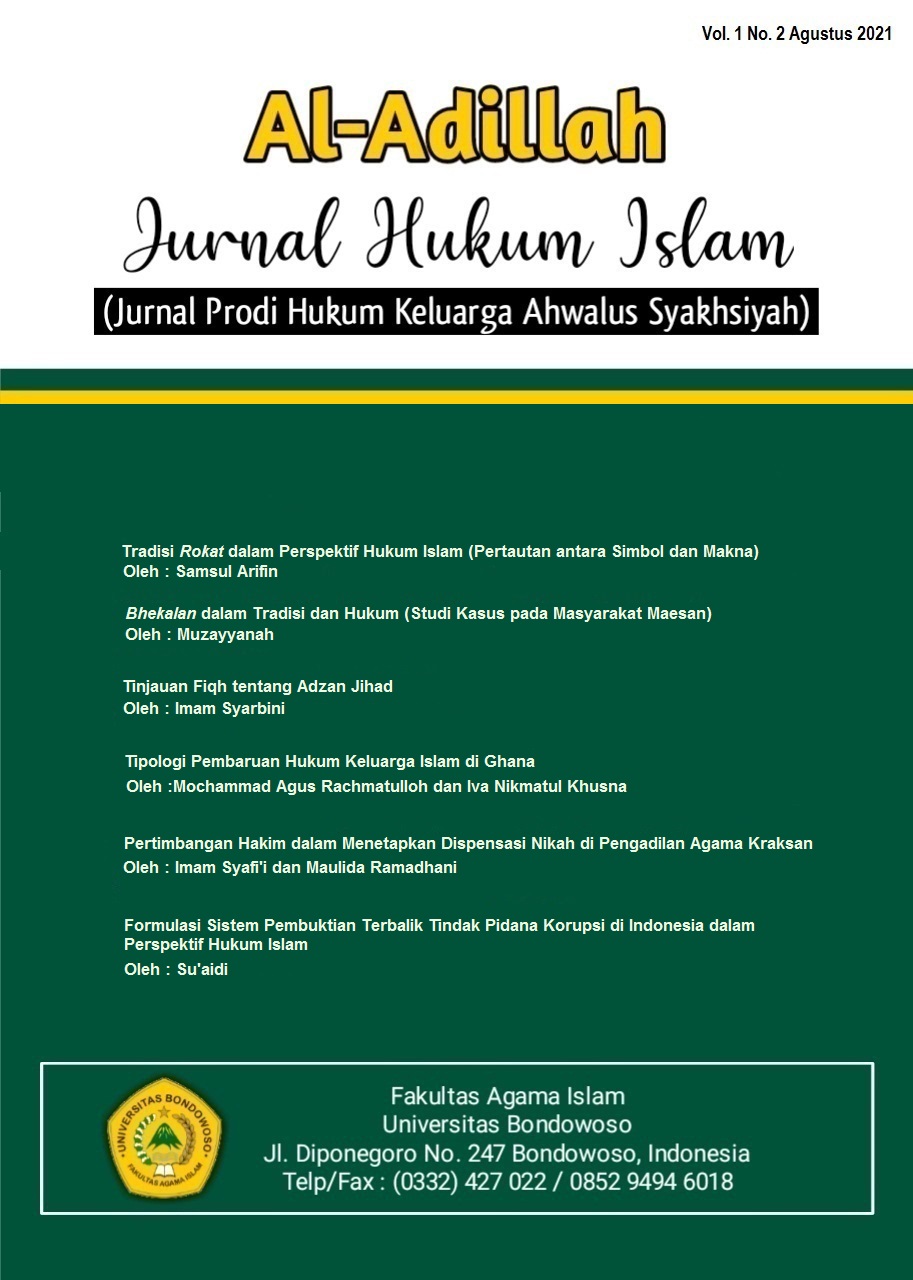Tradisi Rokat dalam Perspektif Hukum Islam (Pertautan antara Simbol dan Makna)
Keywords:
Rokat Tradition, Islamic LawAbstract
Islam in Indonesia is Islam with many traditions. It can be understood that before Islam entered the archipelago through many things, namely trade, marriage, education, Sufism, art, politics, and da'wah, so that acculturation became inevitable, namely a social process that arises when a group of people with a certain culture meet elements of another culture. The foreign culture is gradually accepted and processed into its own culture without causing the loss of the cultural elements of the group itself. So that a new culture is formed, namely a fusion of two cultures. Rokat, for example, is one of them in Javanese-Madurese culture which is an acculturation of culture. Namely community activities that involve many people by reading readings, certain prayers and certain goals. In terms of its purpose, it can be seen that rokat is divided into several types of rokat romah, rokat tasek, rokat sabeh, rokat tanian, rokat 7 are (Madura language) and others. The reading of certain rakats and certain prayers is believed by some Muslims, especially rural people, that the prayers that are said will be fulfilled. Uniquely in the prayer in Javanese, some of them speak Madura. Besides that, some rokat rituals involve preparing certain foods or certain items, with some people offering offerings. The question is how does Islamic law view the practice of the rokat ritual. That rokat is a form of embodiment of prayer that is said at the end of the ritual. Of course, pray to Allah SWT. Because, the text of the prayer is clear to whom. As long as you do not pray to other than Allah, then it is not called shirk and kufr. As for offerings, it is basically alms that will be distributed to the people who are present in the rokat ritual.













